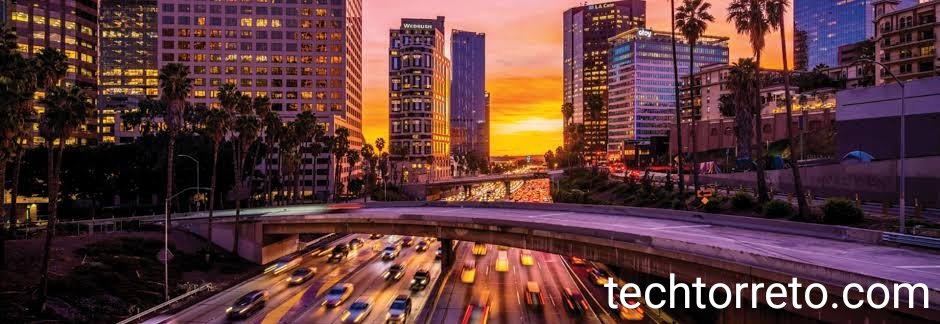LA Smart City 2028

Introduction
Los Angeles is on track to transform into a global leader in urban innovation. The concept of la smart city 2028 represents a forward‑looking vision centered around sustainability, connectivity, and community. From intelligent transportation to green infrastructure, this initiative will reshape daily life for residents and visitors alike.
H2: Vision Behind LA Smart City 2028
Los Angeles aims to leverage technology for improved livability. With increasing population and demand, city planners emphasize resilience, efficiency, and social equity. The la smart city 2028 framework includes deploying sensor networks, open data platforms, and innovative public services. Consequently, local government and private stakeholders collaborate to build a future-ready metropolis.
H2: Key Pillars of LA Smart City 2028
H3: Intelligent Transportation Systems
In la smart city 2028, smart traffic lights, adaptive transit, and electric shared mobility converge. By integrating real‑time data from sensors and commuter apps, the city optimizes traffic flow, reduces congestion, and lowers emissions.
H3: Sustainable Energy and Infrastructure
The plan incorporates solar-powered microgrids, energy-efficient retrofits, and renewable energy incentives. As a result, neighborhoods become self-sufficient hubs that significantly reduce carbon footprints.
H3: Digital Connectivity and Data Management
Citywide high-speed internet access, public Wi‑Fi, and secure open-data portals enable community-driven services. Moreover, data privacy and cybersecurity frameworks ensure trust and transparency.
H3: Environmental Monitoring and Resilience
Air quality sensors, flood detection, and temperature monitoring systems are strategically deployed. Consequently, emergency response improves and climate risks are mitigated in la smart city 2028.
H3: Citizen Engagement and Inclusivity
Interactive platforms, participatory budgeting, and language-accessible interfaces foster inclusive decision-making. In that way, diverse communities feel empowered and heard.
H2: Benefits of LA Smart City 2028
- Improved Quality of Life:
Better mobility, cleaner air, and responsive services make daily life smoother. - Economic Growth:
Smart infrastructure attracts investment, innovation hubs, and tech startups. - Environmental Sustainability:
Renewable energy and green design curb pollution and conserve resources. - Equitable Services:
Citizen-driven technologies and data access reduce disparities in service delivery.
H2: Implementation Strategy
- Phase 1 (2023–2024): Planning & Pilot Projects
Stakeholder engagement and small-scale pilots test smart solutions in select neighborhoods. - Phase 2 (2025–2026): Infrastructure Rollout
Citywide network deployment, digital platforms launch, and transit upgrades start. - Phase 3 (2027–2028): Full Operations
Integrated systems go live. Public services become data‑driven and responsive. Evaluation continues to iteratively refine services.
H2: Challenges and Mitigation
Privacy and Data Security
While data drives innovation, safeguards protect personal information. Legal frameworks and encryption policies ensure digital trust.
Digital Divide
To bridge technology gaps, public Wi‑Fi hotspots and digital literacy centers expand access across neighborhoods.
Funding and Governance
The city leverages public‑private partnerships and federal grants to fund the initiative. Transparent oversight committees ensure accountability.
H2: Real-World Use Cases
H3: Smart Transit in Downtown LA
Adaptive bus lanes and curbside IoT sensors adjust to rush‑hour demand, making commutes faster and more reliable.
H3: Energy-Efficient Housing in South LA
Buildings retrofit with solar arrays and smart thermostats show dramatic energy savings while lowering utility bills.
H3: Community Air Quality Alerts in East LA
Residents receive real-time alerts via apps about pollution levels, helping them make safer outdoor decisions.
H2: Why LA Smart City 2028 Matters Globally
As one of the world’s major cities, Los Angeles sets a visible example. With la smart city 2028, it becomes a model for urban resilience, innovation, and inclusive growth. Consequently, other cities can adapt its framework for their own transformations.
Frequently Asked Questions (FAQs)
Q1: What is meant by “la smart city 2028”?
It refers to Los Angeles’ comprehensive plan to implement smart technologies and sustainability measures by 2028.
Q2: When did the project begin?
Planning began around 2023, with pilot programs in early years, followed by phased implementation through 2028.
Q3: How will transportation change?
Expect real‑time traffic management, adaptive transit lanes, and expanded electric mobility networks.
Q4: How does this plan address climate change?
By deploying renewable energy, monitoring air quality, and lowering carbon emissions across neighborhoods.
Q5: Who funds LA Smart City 2028?
Funding comes from municipal budgets, state and federal grants, and public‑private partnerships with technology firms.
Q6: How can residents participate?
Through digital platforms for feedback, participatory budgeting programs, and community‑driven data portals.
Conclusion
In summary, la smart city 2028 is poised to transform Los Angeles by integrating advanced technologies, green infrastructure, and inclusive planning. Its success depends on strategic implementation, community engagement, and ongoing evaluation. Ultimately, it promises a smarter, cleaner, and more equitable Los Angeles—and serves as a global benchmark for urban innovation.